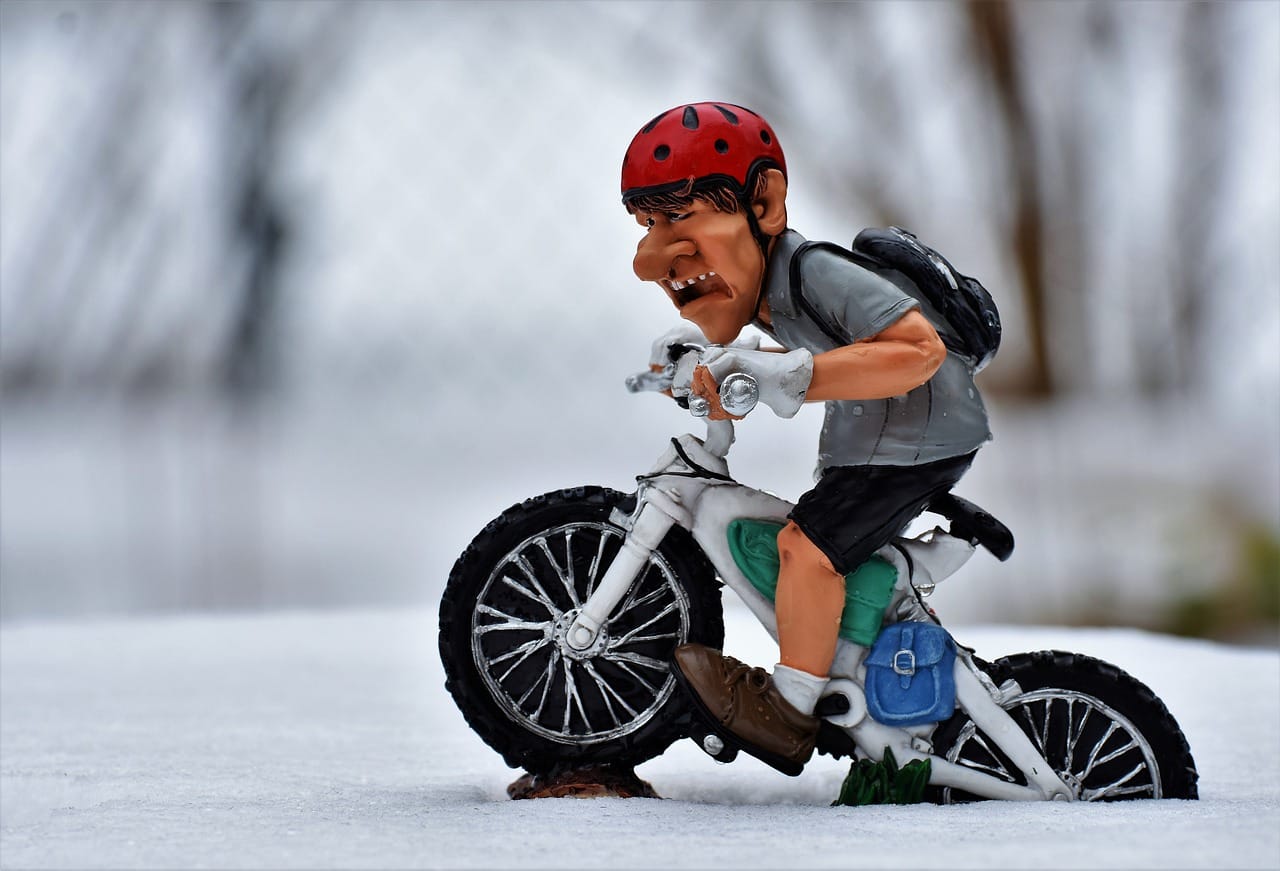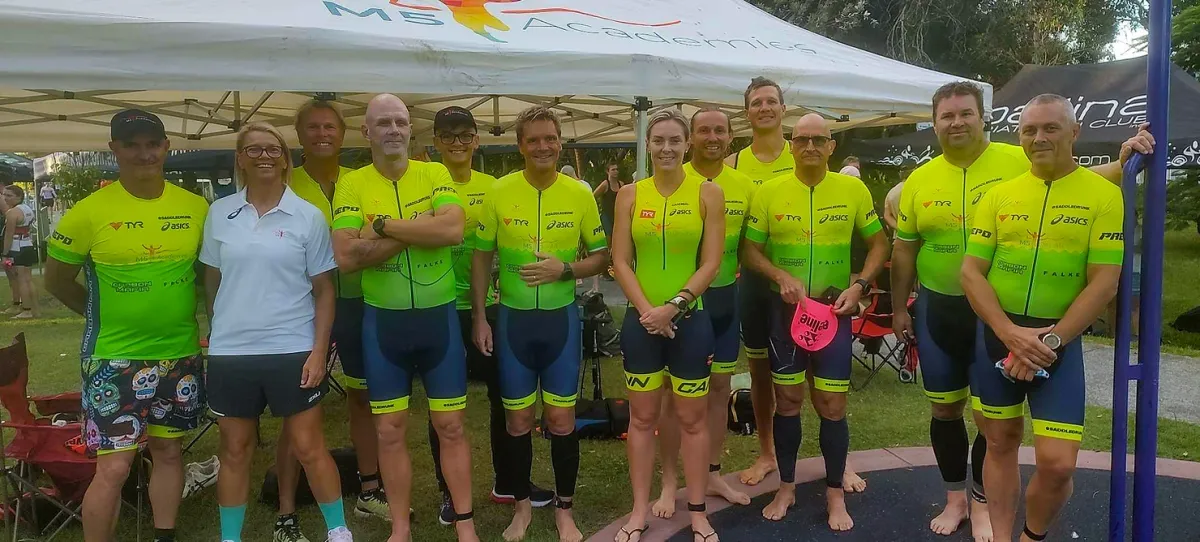If you are starting out in triathlon and want to go fast on the bike leg, you first have to go long.
Seasoned triathletes often debate whether the running or cycling legs of a race are the most important while the swim leg is regarded as a necessary evil. Both camps have some good points to argue. The running camp claims that theirs is the final event, so that is where races are won or lost. The cycling camp will tell you that their section is the most critical because it is the longest, and if your bike performance is weak it can bump you down the field drastically and the best running in the world will not get you back to the front.
Both factions make good points, but most beginner and intermediate level triathletes, to their detriment, tend to underestimate the cycling portion of the triathlon. The two main cycling deficiencies triathletes have are inadequate endurance and low force production.
Let’s first look at how you should be maximising your cycling endurance and then we’ll take a quick look at some power or force workouts to help polish you up for high-intensity training.
It is now accepted, without question, that cyclists need an endurance-conditioning phase, and this applies even more so to triathletes. Cyclists vary somewhat with their approach to the endurance phase, but most will spend eight-to-12 weeks in this conditioning phase where they do lots of long distance cycling to enhance their endurance, muscular endurance and speed endurance.
The purpose of your endurance-conditioning phase
This base period is to fully develop your cardiovascular endurance, or improve your aerobic capacity (known as VO2 max), increase the number of capillaries that supply blood to your working muscles, increase the number of mitochondria in your muscle cells, increase your blood volume (by about 0.5 litres), and decrease your steady-state cruising heart rate. The endurance phase increases your body’s resilience to high volume workloads, and prepares you for the higher intensity sessions that will follow.
But unlike running, where you simply go out and run lots of kilometres at a steady pace for months on end, cycling endurance requires a mix of training efforts to develop your speed endurance, muscular endurance, and your good old cardiorespiratory endurance.
Preparation phase
Do not leap straight into this phase without first doing two-to-four weeks of general adaptation cross training. The purpose of this is to prepare your body for the rigours of the endurance phase by doing low intensity workouts, emphasising aerobic endurance through activities such as swimming, vigorous hiking, or the like. You should also commence your strength training workouts at this time if you are not already doing so. You’ll work out four-to-six days each week, and should be doing two low-intensity sessions per day. Your goal is to emerge from this phase full of vim and vigour, ready for your base-conditioning phase.
The base-conditioning phase
In base conditioning, you phase in your on-bike time and progressively increase the volume of training by cycling further each week while scheduling lower volume weeks for recovery. No one can increase their endurance in a linear trajectory; we must all incorporate recovery of some kind to avoid overtraining, illness or injury. We do this by increasing the length of our cycling sessions for three or four weeks followed by a lower volume week.
Most of this long cycling is done at an easy pace in high spin gear, but the devil is in the detail: during the lower volume week, you amp up the intensity in one or two of the cycling sessions so your legs don’t get stuck in a ‘high gear rut’.
For those of you with access to cycling groups, you should consider doing these initial workouts solo before linking up with a group, as their median training pace may be too hard for you. Hammering away with a cycling group that is beyond your current fitness is inviting overtraining, illness or injury.
Because endurance training is typically done in the winter, indoor trainers or rollers can be substituted for outdoor road workouts when the roads are dangerous or impassible. Always think safety.
Fitting your endurance cycling workout in with your other triathlon training needs some planning. As a general rule, schedule the long cycling sessions on a day when you have done weight training, running interval training or swimming intervals. Doing two anaerobic workouts on the same day, even if in different sports, is a good way to overtrain and flatten yourself.
Your long endurance cycling workouts should consist of staying in your lower aerobic heart rate zones on rolling courses with short, small grades up to four per cent. Try to stay seated on the uphills while maintaining a comfortable high cadence. These sessions can be as long as 90 minutes and as short as 45 minutes.
A good weekend aerobic endurance bike session can be over a rolling course with small hills and gear selections that take you into a higher heart rate zone for a few minutes at a time. Stay in the saddle during these sessions. These should be long – from 60-to-120 minutes – and the cumulative time for your short intense bursts should be 15-to-30 minutes.
How long should your cycling sessions last? Your overall goal is to cover the length of the cycling distance you will be racing over, so if you are aiming at a half ironman, you need to attain 90 kilometres comfortably, or the Olympic distance of 40 kilometres, if that is your goal.
Strength training through the base-conditioning phase
Start your weight workouts with low resistance and high repetitions, and each week cut the reps down and increase the weight. Your goal is to have your strength at its maximum by the end of the 12-week conditioning phase so you can apply maximum power (or force) to the pedal when you start your sprint training.
The primary muscle groups used in cycling should be worked, including the low and mid back, gluteals, hamstrings, calf muscles, quadriceps, abdominals and arm and shoulder musculature. One or two sets of each exercise are sufficient. You’re not training to be a bodybuilder here, so keep your weight sessions short and sweet – 45-to-60 minutes max.
Research shows that it takes us about two-to-three months to reach our maximum strength development if we are starting from scratch, making the eight-to-12 week conditioning phase the ideal time for this. And in case you’re wondering if you can increase both your endurance and strength at the same time, the answer is yes. Provided you allow adequate recovery from your strength training workouts (two-to-three days between sessions), you should have no problems adapting to your strength training during your conditioning phase.
Increasing your force
If you have done consistent weight training through your endurance phase, working from low resistance and high reps to high resistance and low reps, you are now ready to transition from low gear riding to putting the pedal to the metal. Your goal is to increase your muscular force output and power, to get faster speed endurance. Why is muscular force important? Look at force as your reserve gear. This is what gives you a good jump start or acceleration to move past other riders, accelerate out of corners, get off the start line fast, hit hills hard, ride into the wind, and generally enable you to cruise at a lower percentage of your maximum force than the riders around you.
Much research has shown that cyclists who improve their muscular force improve their overall cycling performance. Most cyclists notice that with force training what was once anaerobic threshold cycling becomes their standard aerobic cruising speed, and usually at a high gear. In other words, your cycling economy has improved to the point you are using less effort when pedalling at a given power output.
How does this happen? Muscle biopsies show that an intermediate type of fast-twitch muscle fibre takes on the characteristics of a slow twitch fibre, becoming more oxidative while increasing the cross section of these fibres giving them the ability to overcome more resistance.
Summary
Improving your cycling for triathlons is a critical aspect of your training and should be one of your major focuses. It can make a big difference to your finishing position and put you further up the field than you ever dreamed possible. But to do this you need a solid conditioning build-up phase of two-to-three months where you concentrate on developing your endurance, with some shorter higher intensity workouts to maintain your leg turnover.








